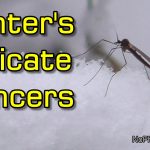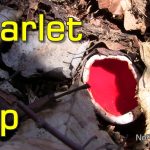
Coral Spot Fungus (Nectria Cinnabarina) stands as a notable and widespread fungal pathogen, impacting a diverse array of deciduous and evergreen trees and shrubs. Identified by its vibrant coral or orange-red spore-producing structures, this fungus induces small, sunken cankers on infected branches, often accompanied by the exudation of a red, gelatinous substance during periods of humidity. Its host range spans fruit trees like apple and cherry, along with ornamental plants including roses and rhododendrons.
As a resilient pathogen, Coral Spot Fungus excels in humid conditions, employing a complex life cycle encompassing both sexual and asexual reproduction. Asexual spores, or conidia, are produced in distinct pustules or stroma, contributing significantly to the dissemination of the disease, particularly through rain splash.
The symptoms of Coral Spot Fungus manifest as dieback of branches, posing a threat to the overall health of affected plants. Recognizing the significance of environmental conditions, it thrives during wet and warm periods, making it a potential concern in regions with such climates.
The fungus exhibits a propensity for stressed or weakened plants, emphasizing the importance of overall plant health in disease prevention. Control and prevention strategies involve meticulous pruning and removal of infected branches, coupled with good garden hygiene practices, such as the disposal of affected plant material.
While specific natural enemies are not extensively documented, the soil ecosystem likely harbors a complex interplay of microorganisms that may contribute to the suppression of Coral Spot Fungus. Consequently, promoting soil health through organic matter addition and avoiding excessive fungicide use can indirectly support these natural control mechanisms.
Coral Spot Fungus is distributed globally, with occurrences documented in North America, Europe, and Asia. Effective disease management strategies should be tailored to the specific plant species affected and consider local environmental conditions.
Is Coral Spot Fungus Poisonous to Humans?
Coral Spot Fungus (Nectria cinnabarina) is generally not considered poisonous to humans. It primarily affects woody plants, causing cankers on branches and stems. The bright coral or orange-red spore-producing structures on infected wood are distinctive but are not known to be harmful to humans.
However, it’s important to note that while the fungus itself may not be toxic, handling infected plant material or coming into contact with fungal spores can potentially cause skin irritation or allergic reactions in some individuals.
If there are concerns about potential health risks or if someone experiences adverse reactions after contact with Coral Spot Fungus or any plant-related material, it is recommended to seek advice from a healthcare professional.





